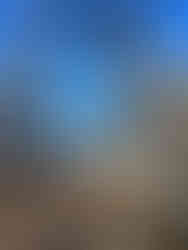Bariloche: Winter Wonderland
- williamggerson
- Sep 2, 2024
- 3 min read
Updated: Feb 18
Located on the southern shore of Lago Nahuel Huapi in Argentine Patagonia, San Carlos de Bariloche is a veritable winter wonderland: alpine architecture, fine chocolate shops, and warm cafes and restaurants fill the streets of this delightful town, with ample opportunities for winter sports and gorgeous road trips close by.

With the modern settlement originating around a small trading post known as La Alemana, founded by a German-Chilean who transported goods across the Andes from Puerto Montt, Bariloche began to develop as a major tourism center in the 1930s.

Today, it is home to Cerro Catedral, the largest ski resort in the Southern Hemisphere, and the town attracts hundreds of thousands of tourists from Argentina and neighboring countries who come to ski the slopes, indulge in the town’s fine gastronomy, and explore the beautiful surrounding area.
Drives
I highly recommend renting a car for at least a day or two and hitting the roads, which will reward you with some of the most breathtaking lake and mountain views you will ever see.

About a half hour west of town is the Circuito Chico, a roughly 16 mile (25 km) loop that offers panoramic views of Lago Nahuel Huapi. The road hugs the shores of the lake and wraps through Patagonian forest, traversing the Llao Llao Peninsula and its iconic hotel, which seems lifted from a Wes Anderson film. On the way back to town, stop to check out Colonia Suiza, a small village that preserves the traditional houses built in the late 19th century by Swiss immigrants.

But you must dedicate a day to the Camino de los Siete Lagos, a scenic portion of Ruta 40, the national highway that stretches 5,200 km along the length of the entire country, from the northern border with Bolivia to the southern tip of the Argentine mainland, with only Tierra del Fuego evading its reach. This particular portion of the highway runs from Villa La Angostura, on the north shore of Lago Nahuel Huapi, to San Martín de los Andes, some 67 miles (108 km) north. Before leaving Villa La Angostura, stock up on snacks for the trip: empanadas at Pampita Empanadas Artesanales, chocolate from Mamuschka, and hot chocolate and coffee at Café Antibes. The journey north takes roughly two hours, but make sure to spend ample time at the miradores to enjoy the absolutely stunning views. The most famous stops include:
Stop 1: Lago Espejo
Perhaps the most spectacular of the seven, Lago Espejo (Mirror Lake), is not to be missed! It's glassy waters are best early in the day as the water is the most still.

Stop 2: Lago Correntoso

Stop 3: Lago Escondido
Lago Escondido (Hidden Lake), is true to its name. Follow the signs after Lago Correntoso in order to find the smallest of the seven lakes.
Stop 4: Lago Villarino
Lago Villarino boasts the snowiest mountaintops of the drive, and is therefore an essential stop along the way!

Stop 5: Lago Falkner
Enjoy Lago Falkner's glassy (and ice cold) water!
Stop 6: Cascada Vuliñanco

Stop 7: Lago Machónico

When you reach San Martín, spend some time in the quaint town and stroll along the shores of Lago Lácar before heading back south. Though you follow the same road south as you took north, the views are equally spectacular from a different perspective. All in all, the drive will surely make for one of the most remarkable road trips you’ve ever taken.
Food
Bariloche is home to a fantastic food scene, and there are great restaurants with friendly service and hearty portions of Argentine classics: I recommend El Boliche de Alberto and Alto El Fuego for steak—order the ojo de bife (ribeye) cooked a punto (medium rare), with a provoleta (grilled provolone cheese) to start and a bottle of Malbec, too—and La Fonda del Tío for milanesas, thin breaded veal cutlets brought to Argentina by the Italian immigrants of the 19th century—order it a la napolitana, topped with tomato sauce and mozzarella. Also, don’t miss a choripan from Chimi Bar de Choris or a burger at Weiss Beer&Burgers.

But what really sets Bariloche’s gastronomy apart from the rest of Argentina is its chocolate, with the tradition dating back to the Swiss immigrants who arrived in the late 19th century. Avenida Mitre is filled with chocolate shops, but two stand out among the rest: Rapanui and Mamuschka. Choosing between the two is futile––just get both! Don’t let a day go by in Bariloche without eating some chocolate; it is seriously some of the best that you will ever try. Also, be sure to have the chocolate ice cream at Rapanui, which is considered one of the top ice creams in the world.









